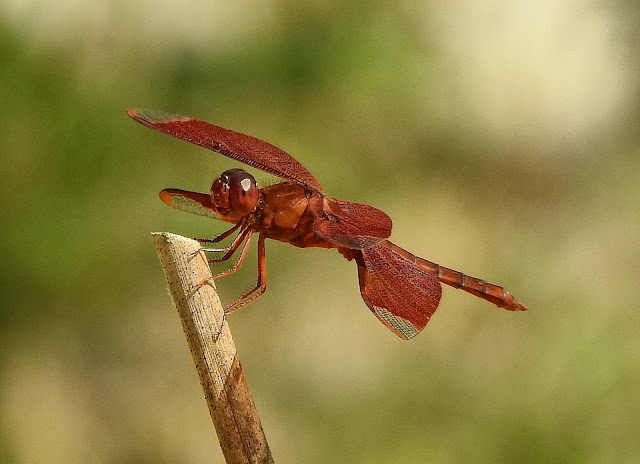This Blog contains Wildlife and Bird Photos from Walks, Safaris, Birding Trips and Vacations. Most of the pictures have been taken with my Nikon P900 and P950X cameras. On the right of the page are labels for each species of Bird/Animal etc. Click on a label and it will show all of the photos taken for that species. I am adding information for each species from sources like Wikipedia. To see any pictures at a large size just click on the image.
TOTAL PAGEVIEWS
TRANSLATE
Tuesday 24 March 2020
23-3-2020 MONTE CORONA, VALENCIA - TRIBE CICHORIEAE (Genus Reichardia)
Reichardia is a genus of plants in the tribe Cichorieae within the family Asteraceae native to the Mediterranean and western Asia. In Crete, Greece the leaves and tender shoots of a variety of Reichardia picroides called galatsida (γαλατσίδα) are eaten raw, boiled, cooked in steam or browned with olive oil by the locals. Brighteyes is a common name for plants in this genus.
7-3-2020 PERIYAR, INDIA - WHITE BROWED WAGTAIL (Motacilla maderaspatensis)
The white-browed wagtail or large pied wagtail (Motacilla maderaspatensis) is a medium-sized bird and is the largest member of the wagtail family. They are conspicuously patterned with black above and white below, a prominent white brow, shoulder stripe and outer tail feathers. White-browed wagtails are native to South Asia, common near small water bodies and have adapted to urban environments where they often nest on roof tops. The specific name is derived from the Indian city of Madras (now Chennai).
The white-browed wagtail is the largest species of wagtail at 21 cm (8.3 in) length. It is a slender bird, with the characteristic long, constantly wagging tail of its genus. It has black upperparts, head and breast, with a white supercilium and large white wingbar. Unlike white wagtails it never has white on the forehead. The rest of the underparts are white. The female has the black less intense than in the male. Juveniles are like the females brown-grey where the adult is black.
The white-browed wagtail is a resident breeder in India and is endemic to the Indian subcontinent. It is found south of the Himalayas, east of the Indus system and to the west of Bangladesh. It is rare in the higher altitude regions but has been seen in Ladakh on the edge of the Tibetan plateau. In most of India it is found below 1000 m but in southern India it goes up into the hills up to 2200 m. It is very rare in the Indus valley area. It is absent from the Sind region of Pakistan. It is found in open freshwater wetland habitats. It is one of the few Motacilla wagtails that has adapted well to urban habitats and is often found perched on overhead water storages in residential buildings.
It is a rare winter visitor to Sri Lanka and have possibly extended their range in recent times.
Usually seen in pairs or small groups near open water. They call often especially in the mornings and are active like most other wagtails. They will perch on the ground as well as on wires or on buildings. The song is long and loud with many different notes. The usual call is a wheezy "wheech". They can fly fairly rapidly for long distances and they fly with a bounding (dipping and rising) flight pattern and have been recorded to travel at the speed of about 40 km/h.
Endoparasitic filarial parasites of the species Splendidofilaria singhi have been recorded in individuals of the species.
5-3-2020 KANHA NAT PARK, INDIA - BARONET BUTTERFLY (Euthalia nais)

Symphaedra nais, also known as the baronet, is a species of Nymphalid butterfly found in South Asia. It was formerly included in the genus Euthalia but it is a sister to members of the genus Bassarona.
It is widely found in India and Sri Lanka. In India its distribution ranges from lower Himalayas to southern India.
Monday 23 March 2020
8-3-2020 THATTEKAD, INDIA - CHESTNUT HEADED BEE-EATER (Merops leschenaulti)
The chestnut-headed bee-eater (Merops leschenaulti), or bay-headed bee-eater, is a near passerine bird in the bee-eater family Meropidae. It is a resident breeder in the Indian subcontinent and adjoining regions, ranging from India east to Southeast Asia.
This species, like other bee-eaters, is a richly coloured, slender bird. It is predominantly green, with blue on the rump and lower belly. Its face and throat are yellow with a black eye stripe, and the crown and nape are rich chestnut. The thin curved bill is black. Sexes are alike, but young birds are duller.
This species is 18–20 cm long; it lacks the two elongated central tail feathers possessed by most of its relatives.
Subscribe to:
Posts (Atom)

















%2010.jpg)
%2011.jpg)
%2012.jpg)











